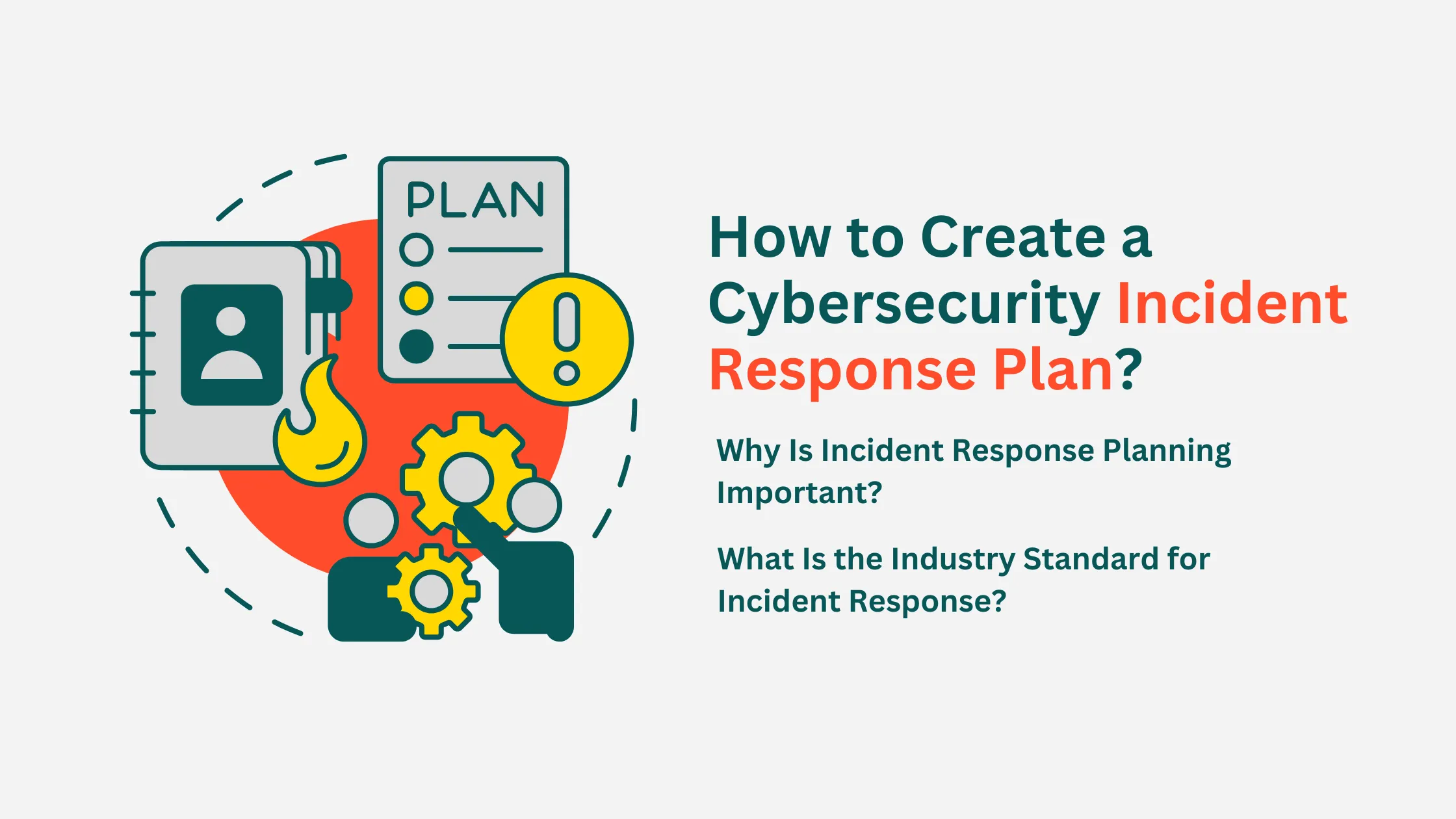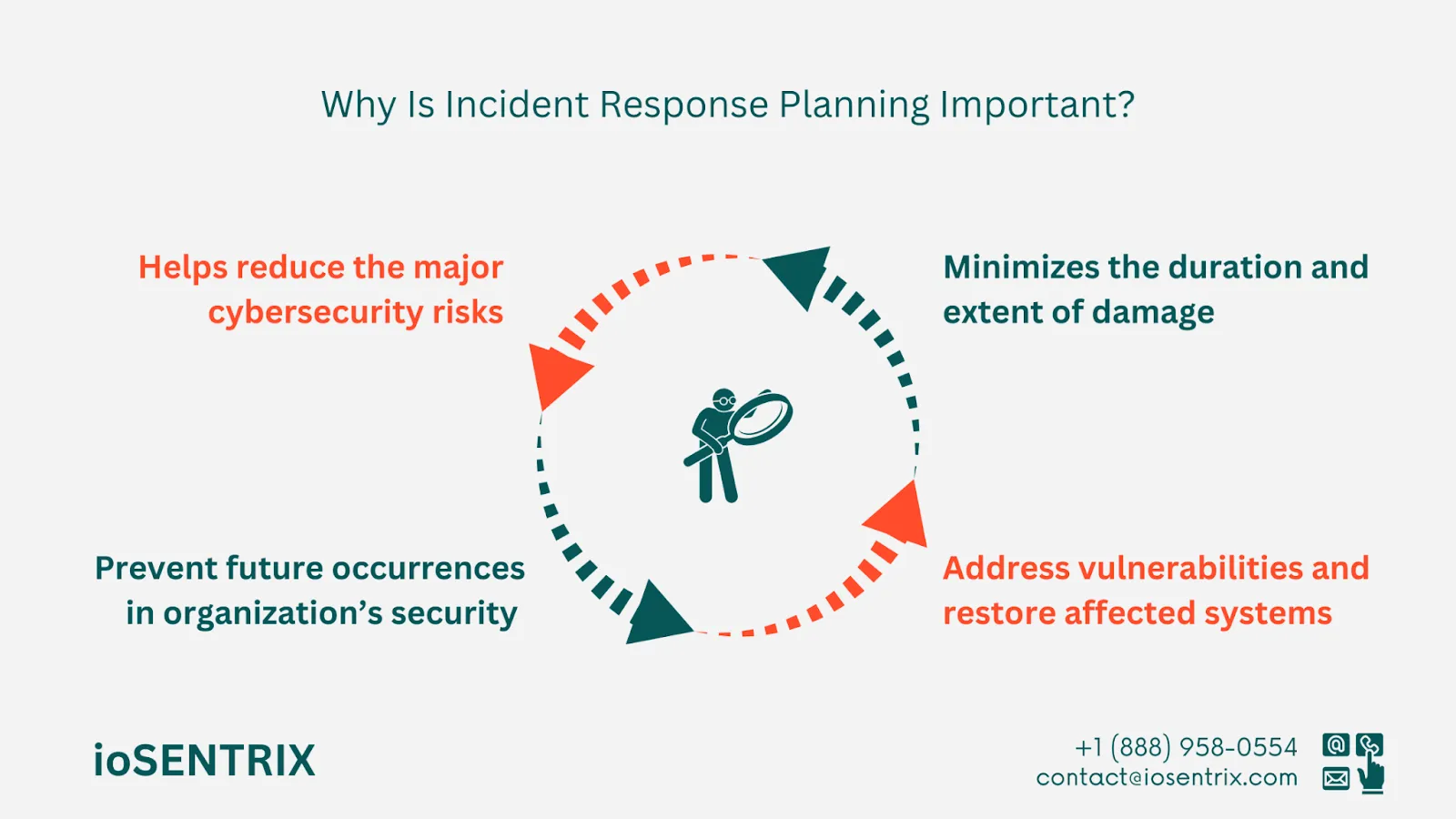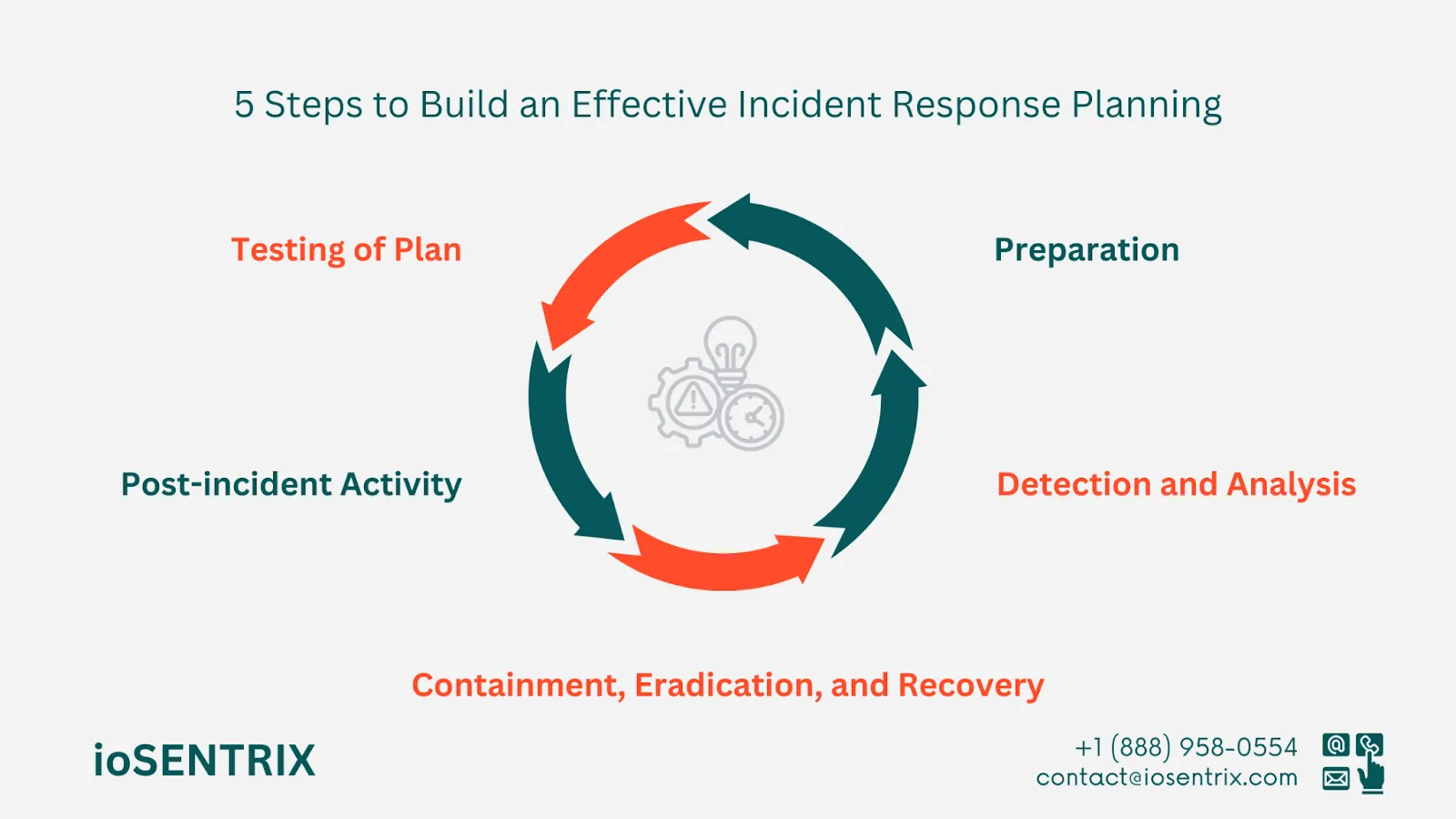
An incident response plan is a set of instructions that detail how your organization will respond to data breaches, leaks, cyber-attacks, and security incidents. These plans include specific steps in different attack scenarios to prevent further damage, reduce recovery time, and lower cybersecurity risks.
Incident response procedures center on preparing for security breaches and strategies for organizational recovery. Failure of a formal IR plan in place can result in missed attack detections, confusion on how to respond to attacks, and challenges in containing and preventing future attacks.
Organizations should be aware that techniques like IP attribution may not always be effective, and it's crucial to have a clear understanding of how to handle stolen data if such an event occurs.
An incident response plan is a set of steps that helps an organization prepare for, handle, and bounce back from a cyberattack. Having a plan like this can make a big difference in how well your organization deals with an attack, minimizes harm, follows regulations, and keeps the trust of employees and customers.
A usual cybersecurity incident response plan contains the following information:
An incident response plan helps minimize the duration and extent of damage caused, identifies key stakeholders, improves digital forensics processes, decreases recovery time, and prevents negative publicity and customer dissatisfaction. Even minor cyber incidents like a malware attack can extend into major issues such as data breaches and business disruptions.
A well-structured incident response plan helps organizations to mitigate losses, address vulnerabilities, restore affected systems, and secure potential attack entry points. It aids in establishing incident handling protocols, defining communication strategies, and coordinating with relevant parties like law enforcement and staff members.

Proper handling of incidents is necessary to prevent future occurrences and maintain the security of an organization that deals with sensitive data such as personally identifiable information (PII), protected health information (PHI), or biometric data. Security events can impact an organization both immediately and in the long run. In 2022, according to IBM and the Ponemon Institute, the average cost of a data breach was $4.35 million.
In addition to financial losses, concerns around business continuity, customer trust, and brand reputation are significant, particularly as businesses increasingly rely on external vendors. Although it is impossible to eliminate all security challenges, an advanced incident response plan can help reduce the major cybersecurity risks.
Various security incidents exist, and their classification varies based on each organization's perspective. What may be crucial for one company could be insignificant for another. However, there are several standard cyber incidents that all organizations should recognize and prepare for.
Each security incident, no matter how small, should be addressed with a formal incident response process and recovery plan. Even minor incidents can create vulnerabilities that hackers can exploit for larger attacks. Security analysts must stay informed with real-time threat intelligence to mitigate risks. In addition, third-party and fourth-party risks involving vendors should not be overlooked.
Security teams must recognize the potential impact vendors can have on their organization's security. Even if third parties are not directly involved in critical business activities, they pose a significant risk due to potential access to sensitive data. Proper vendor risk management is essential to prevent security incidents and protect sensitive information.
Seek out vendors who have SOC 2 assurance. Request to review their information security policy. Create a vendor management policy that includes a third-party risk management framework. This framework will help your organization conduct cybersecurity risk assessments on existing and potential vendors.
There are resources and guidelines available to assist incident response teams in their work. These resources are divided into three categories.
One way for an organization to protect itself is by using a security scanner and a data leak detection tool. These tools can help prevent leaked credentials and other sensitive information from public exposure because of weak S3 security or a lack of proper configuration management.
To detect potential security threats, organizations can use antivirus software, network intrusion detection systems, security incident and event management (SIEM) software, or a vulnerability scanner that checks for CVE vulnerabilities. In a security breach, incident response teams can use remediation workflows to request and track solutions to third-party attack vectors.
Two commonly used frameworks in the industry are the NIST Incident Response Process and the SANS Incident Response Process. These frameworks have become standard practices for managing incidents effectively.

It is evident that both NIST and SANS share similar components and structures but use different wording and organization. Regardless of whether you use NIST, SANS, or another incident response plan template, your incident response plan should include the following key points:
There are many tools and guides you can use to develop your incident response plan, like SANS Incident Management and the CISA Incident Response Plan Basics cheat sheet. These resources stress important parts of the process, including getting ready, finding the issue, controlling it, removing it, bouncing back, and learning from what happened. No matter the method you choose, your cybersecurity incident response plan needs to have five essential steps.
Thinking ahead is important to respond to situations effectively. Map out a plan for addressing incidents, define important tasks to focus on, and identify who will be responsible for leading the response. The plan must be clear and concise, as it will be shared with company executives for their review and support.
After that, gather your incident response team. Involve people from different sectors like IT, management, legal, HR, and communications/public relations. It is important to explain the importance of cybersecurity incident response, the specific roles and tasks each person has in case of an incident, and how having a good plan can help everyone be ready to deal with cyber threats or data breaches.
If your team is spread out worldwide, consider setting up smaller teams in different regions, each led by a designated incident response leader. It's a good idea to appoint someone to communicate with senior management, like a CISO or another business leader. This person should be able to provide updates on incident response in a way that top executives can easily understand.
Regularly review your policies and procedures to guarantee that your incident response team receives consistent training and remains ready to address any incidents promptly.
These measures help in quick detection of any vulnerabilities or attacks so that immediate actions can be taken to reduce further damage.
For instance, by using attack surface analytics and ongoing monitoring, you can identify weaknesses in your network that hackers target for exploitation. This allows you to focus on fixing the most important risks first. To identify and analyze a possible security breach, incorporate endpoint monitoring, firewalls, intrusion detection, and security incident event management (SIEM) tools.

During this phase, the incident response team's main goal is to reduce the impact of an incident. To determine which systems are affected, refer to your security management tools for information and signs of compromise.
Then, disable or isolate these devices, address the underlying problem, and restore systems. The severity of the incident, the criticality of the data or assets involved, and the need for business continuity will guide this phase.
It is important to evaluate incidents based on their potential impact on operations, the risk to systems or data, and the potential for recovery. Remember to document the actions taken and any evidence collected during this phase.
This documentation will be needed for the upcoming stages of your incident response plan and in planning future incident response processes.
Following any cybersecurity incident, it is important to conduct a post-incident meeting to review and discuss the event, along with your organization's reaction. This includes identifying successful strategies, areas where improvements can be made, and lessons learned. Encourage an open and blame-free environment for sharing insights with senior leaders and stakeholders. Seek input and feedback on how the organization can enhance its readiness for future incidents.
The leader of the incident response team will utilize this feature to communicate the following information:
If your company must follow rules that mandate reporting cyber incidents, like the new cybersecurity disclosure requirements from the U.S. Security and Exchange Commission (SEC), remember to consider this in your activities after an incident occurs. SEC regulations state that traded companies must report any significant cyber incident within four business days. Learn more about what qualifies as a significant cyber incident and the recommended approach for disclosing such incidents.
It's important to regularly practice your incident response plan before an actual incident happens. Organize drills and simulation exercises with your team to prepare for different scenarios. For example, one month you can practice responding to a ransomware attack, and the next month, focus on a supply chain cybersecurity attack.
To address a breach effectively, it is important to identify the main problem and fix it. ioSENTRIX professionals help you pinpoint the cause of a vulnerability, like outdated software or system misconfiguration as well as areas of ongoing risk.
With this information, you can create a specific plan to reduce risks and enhance your cybersecurity resilience. With our experts, you can track improvements in security over time and demonstrate to company leaders the strength of your cybersecurity measures.
Learn more on how we can support establishing a strong cyber defense system HERE.